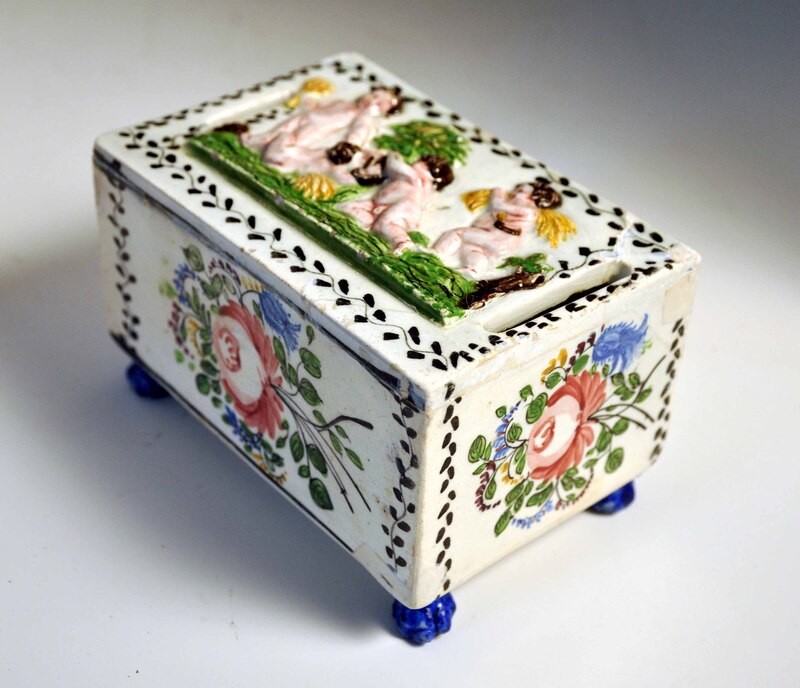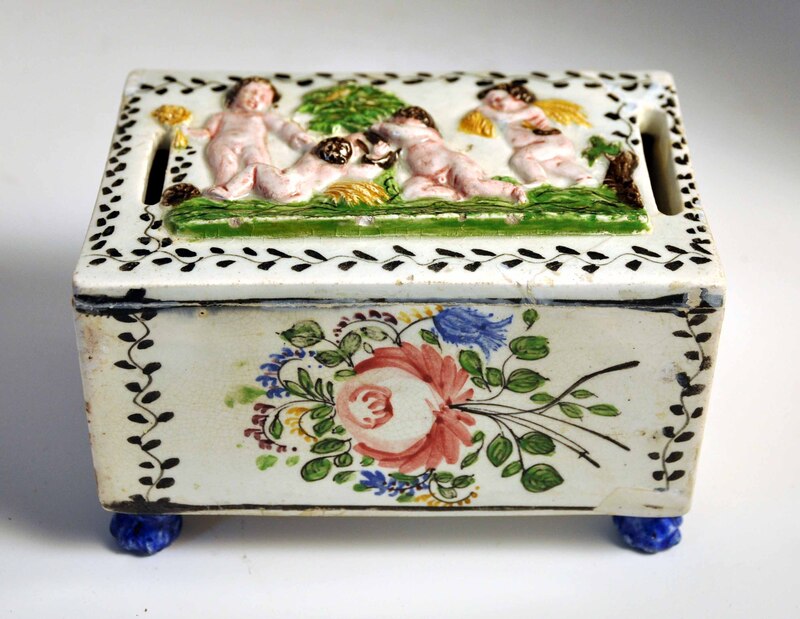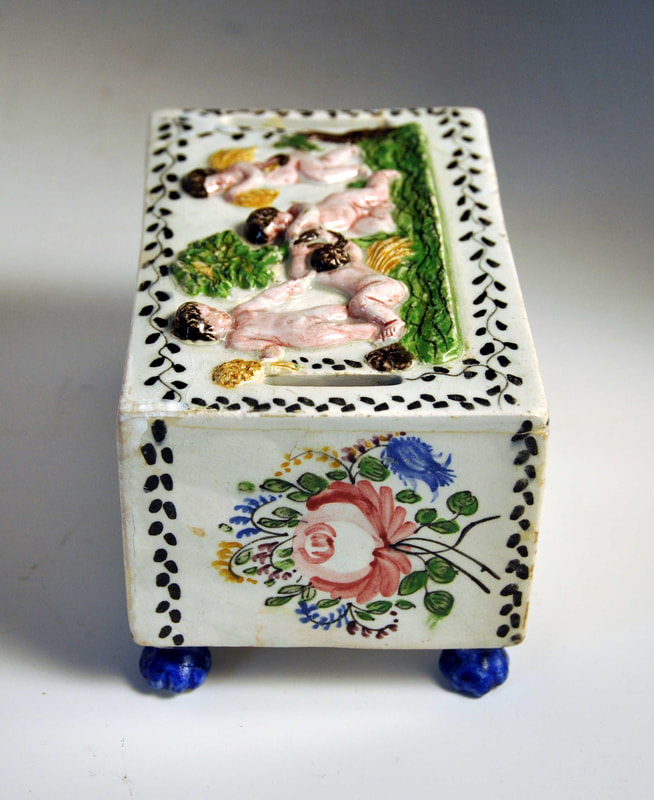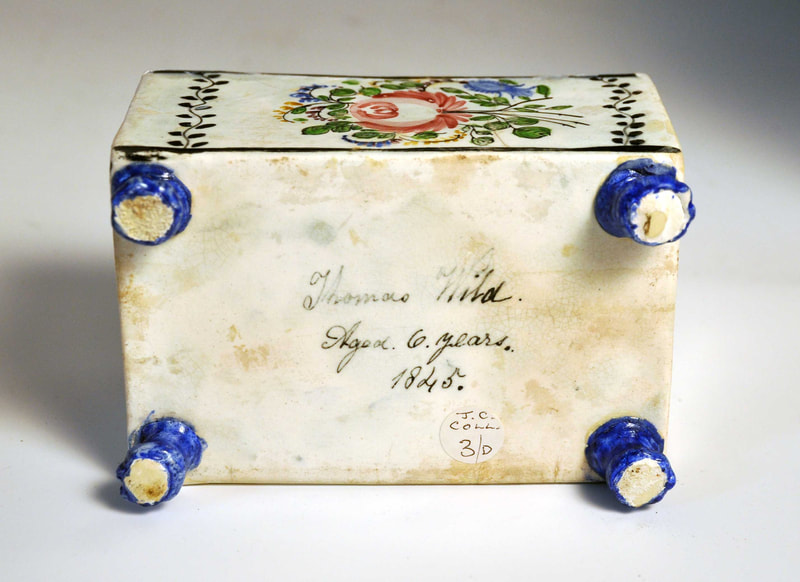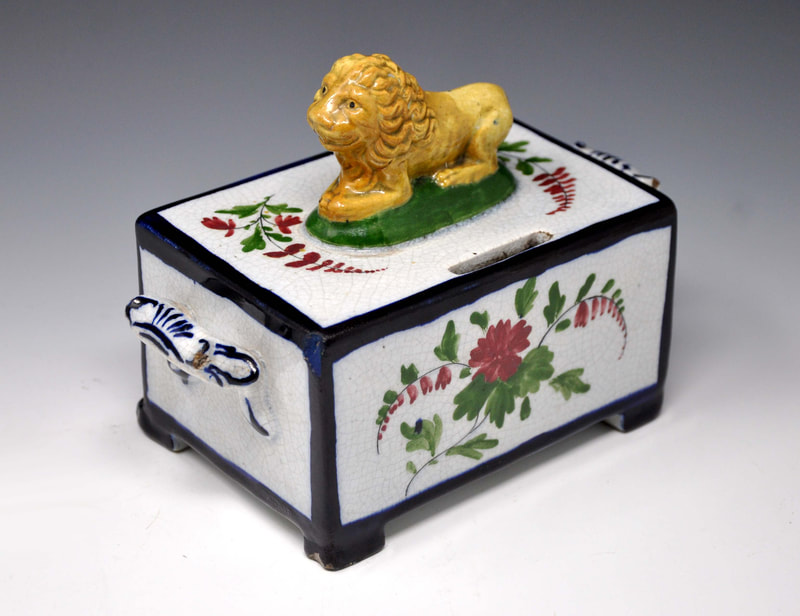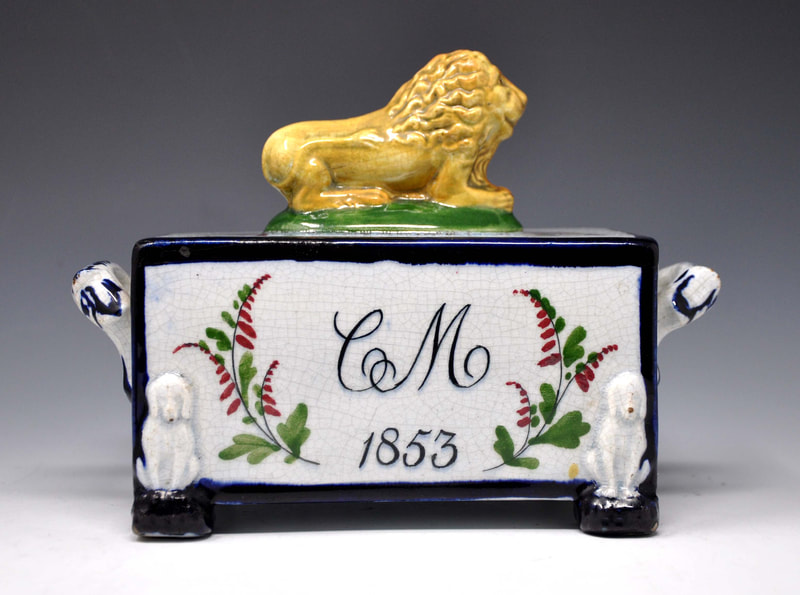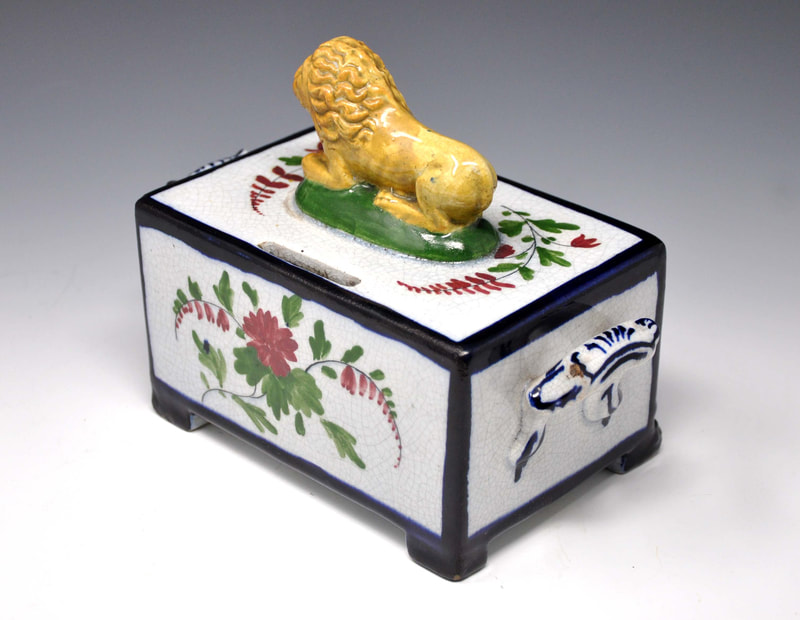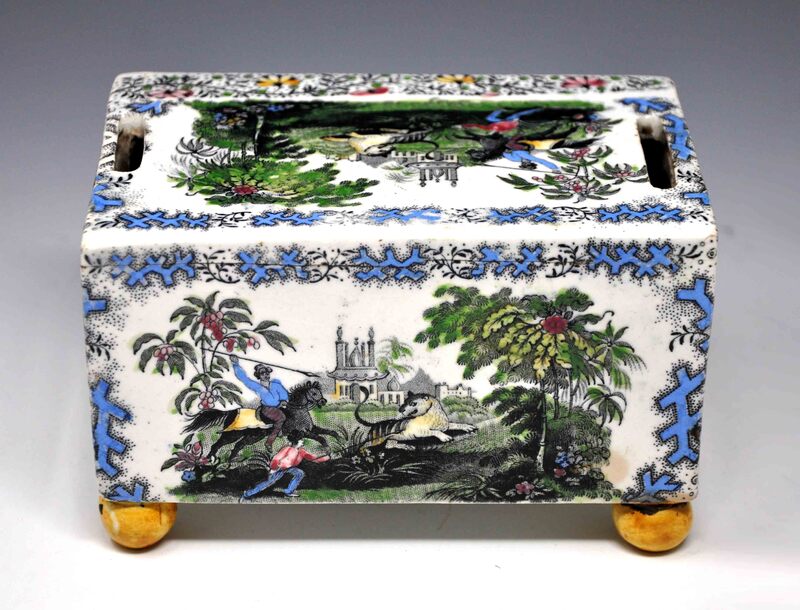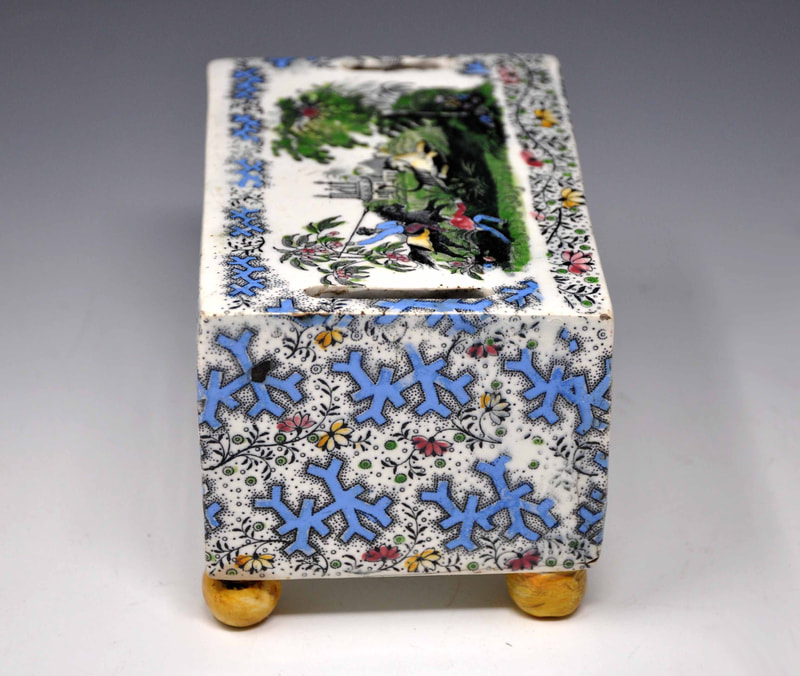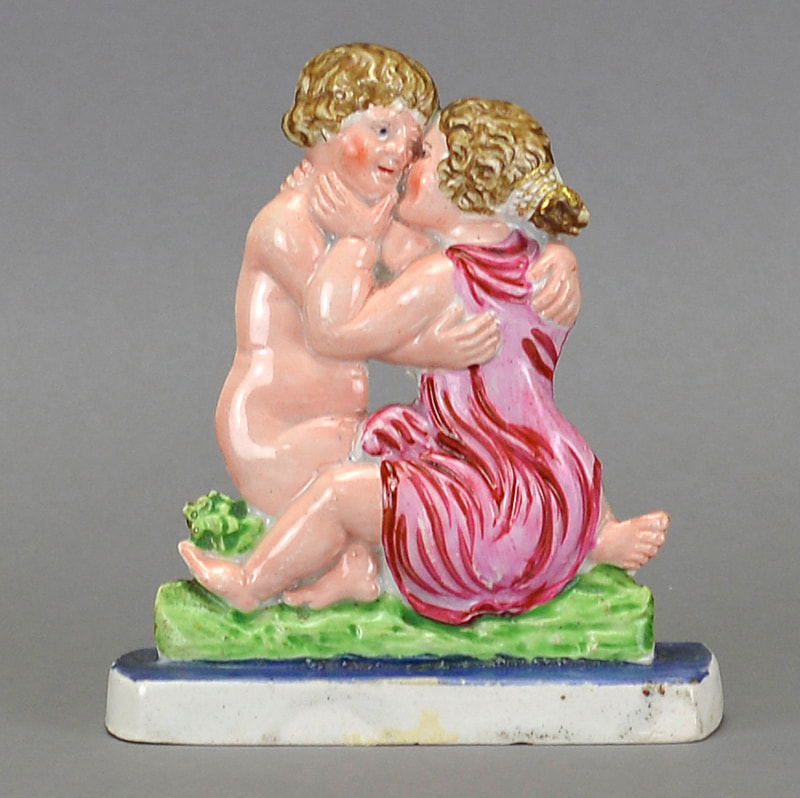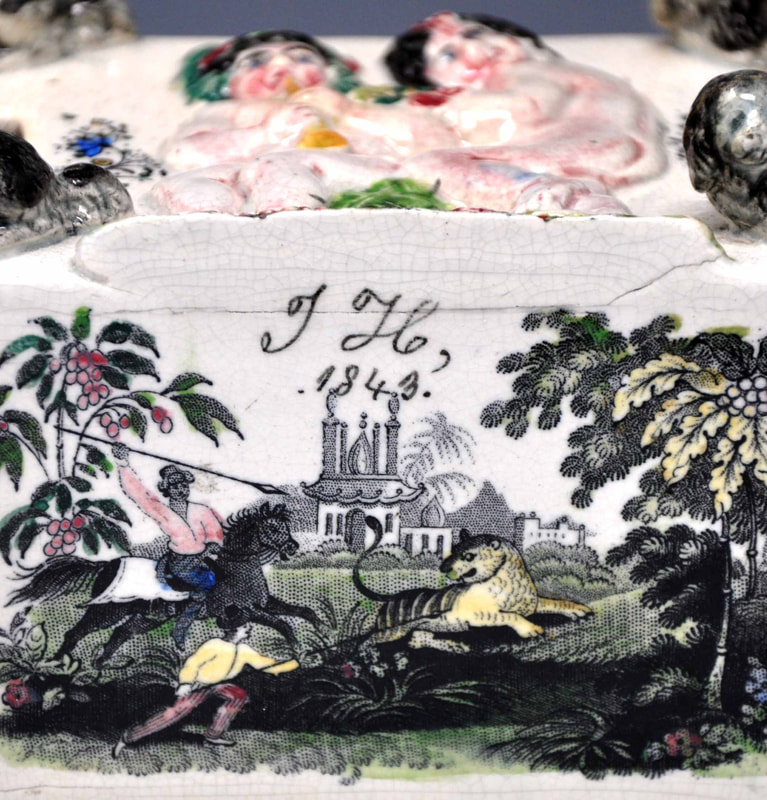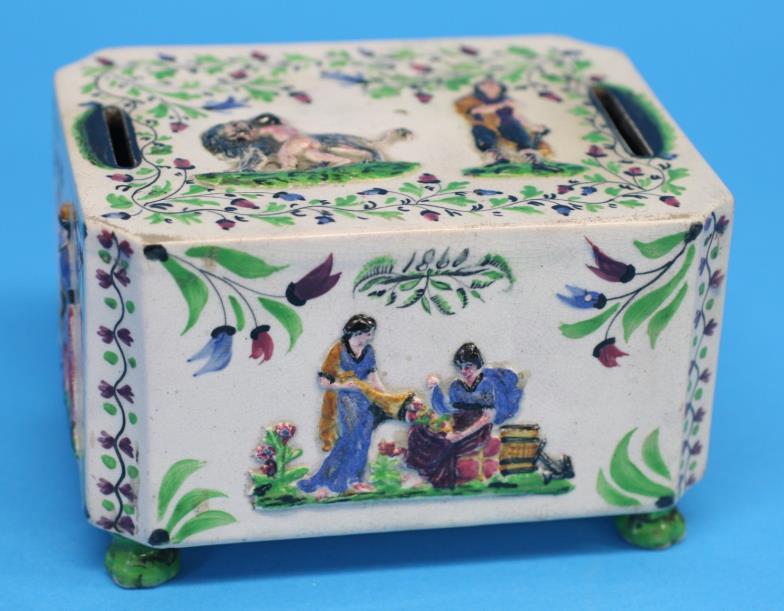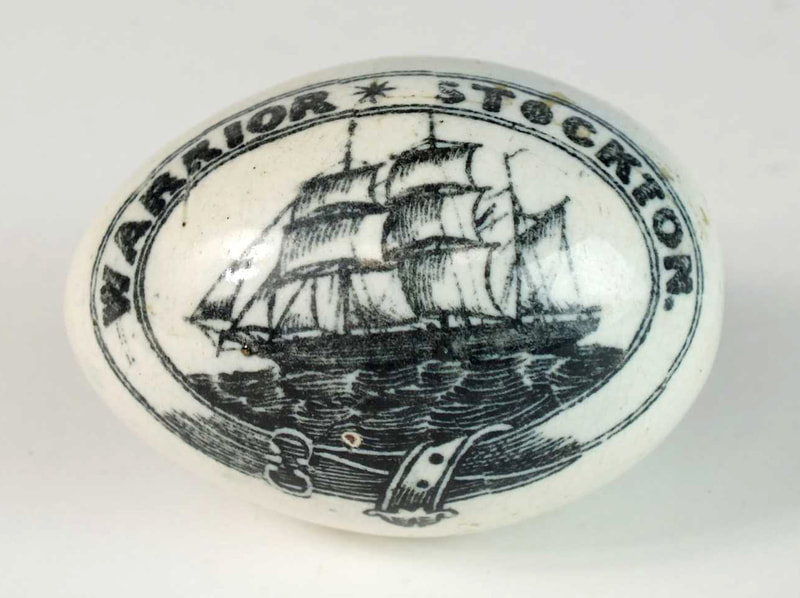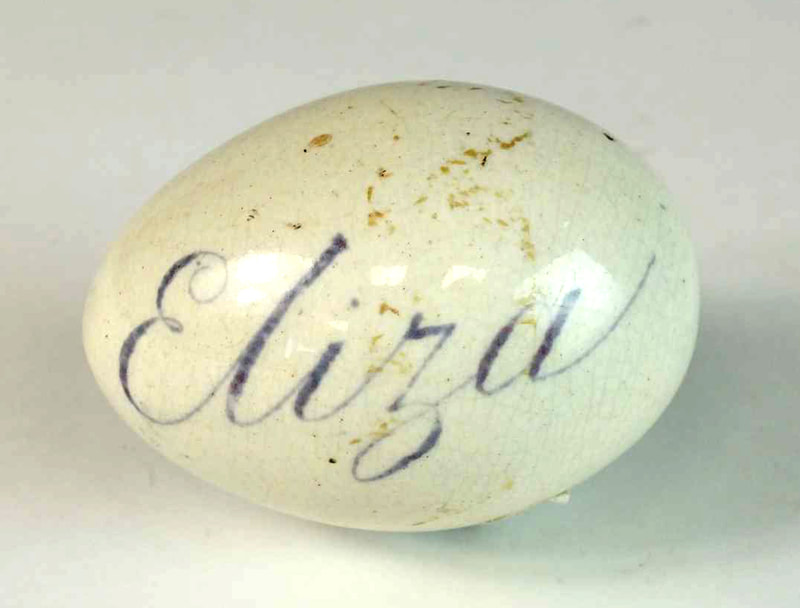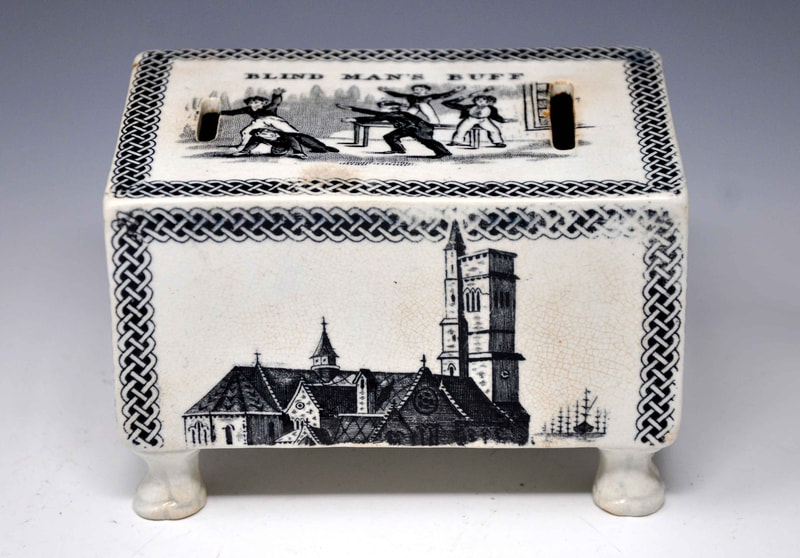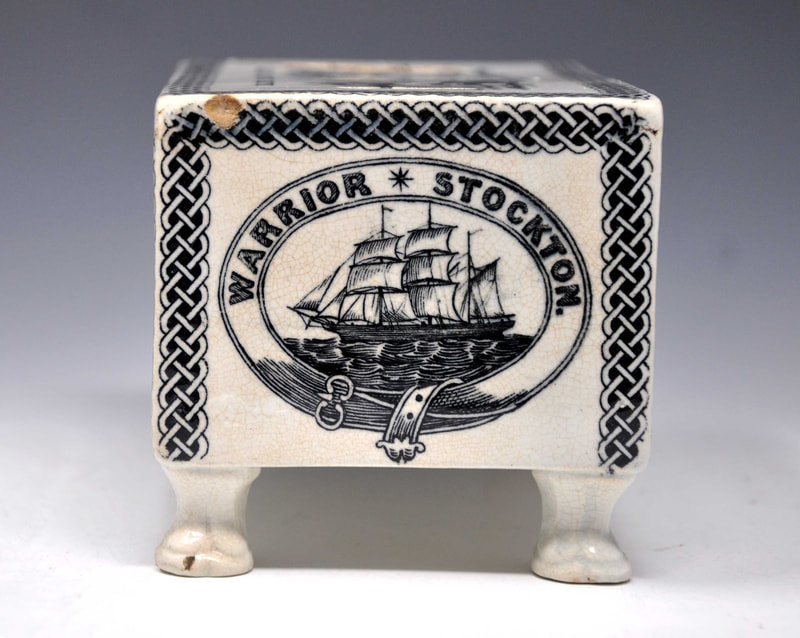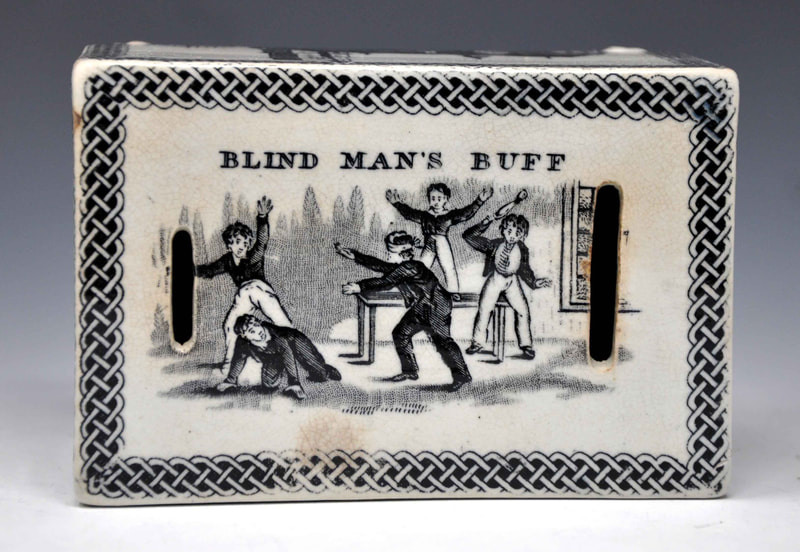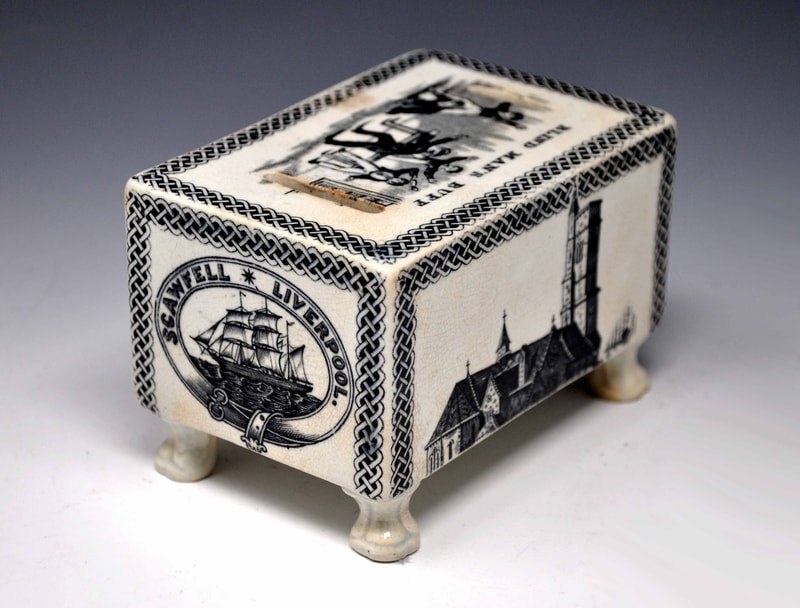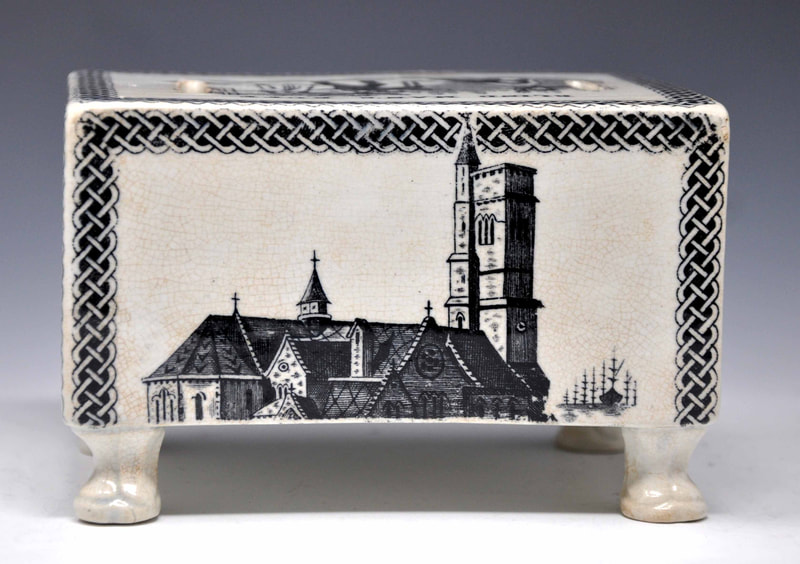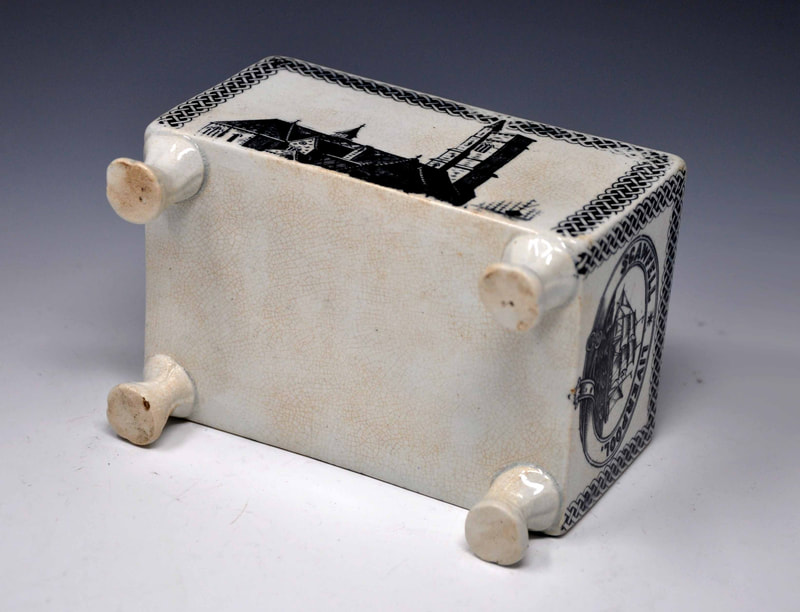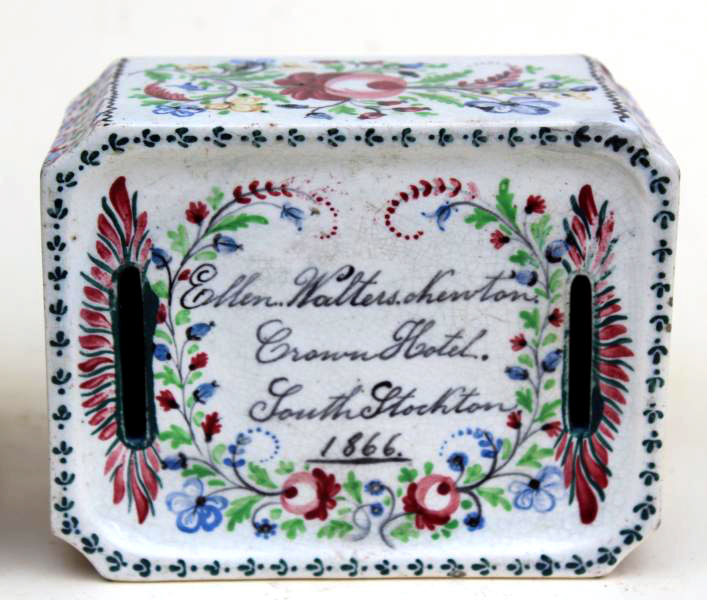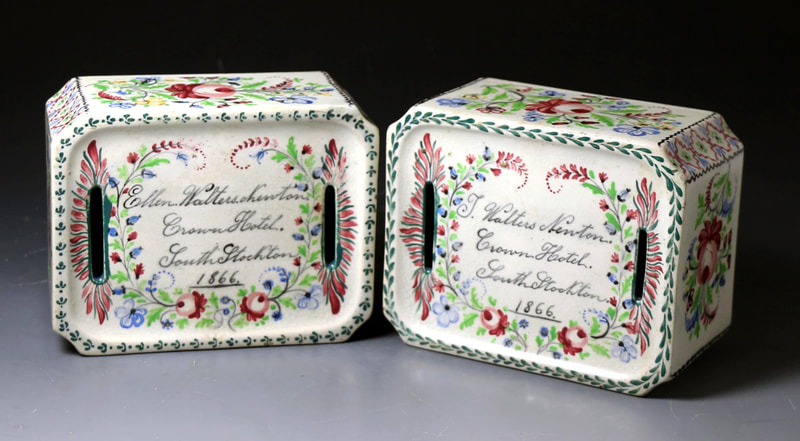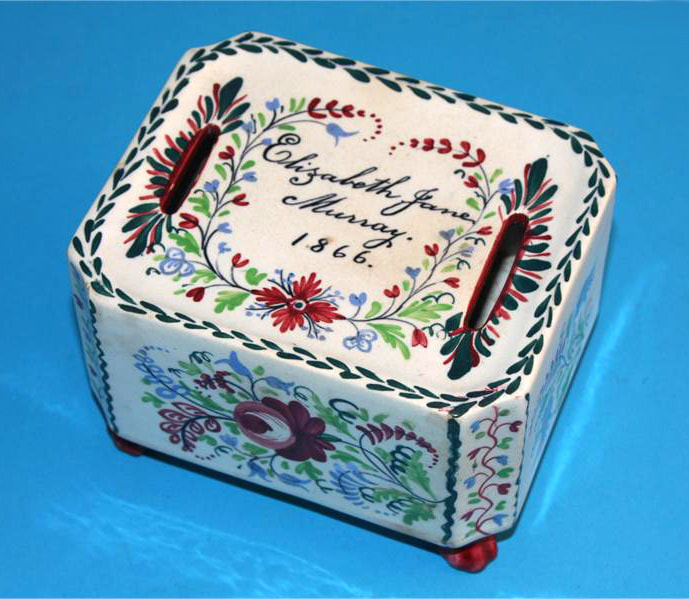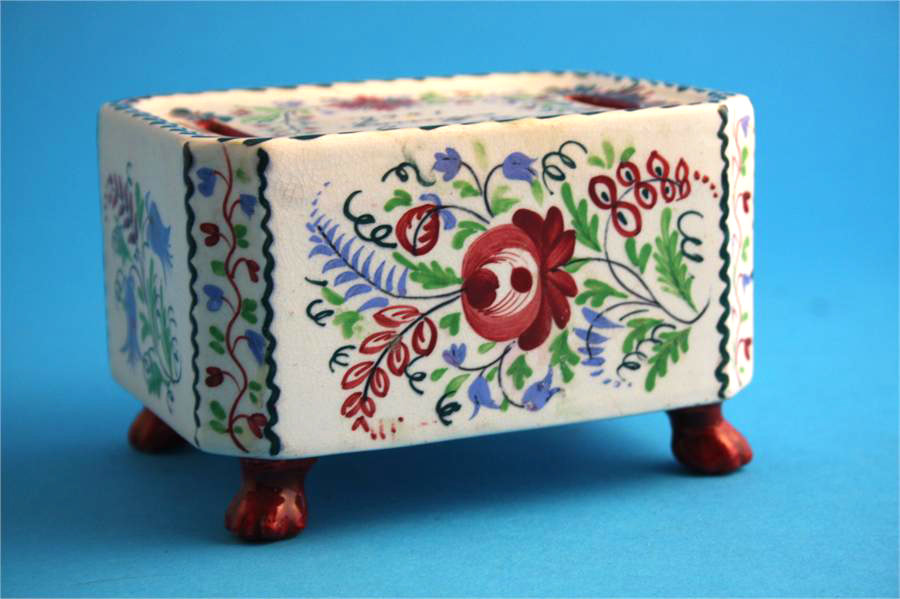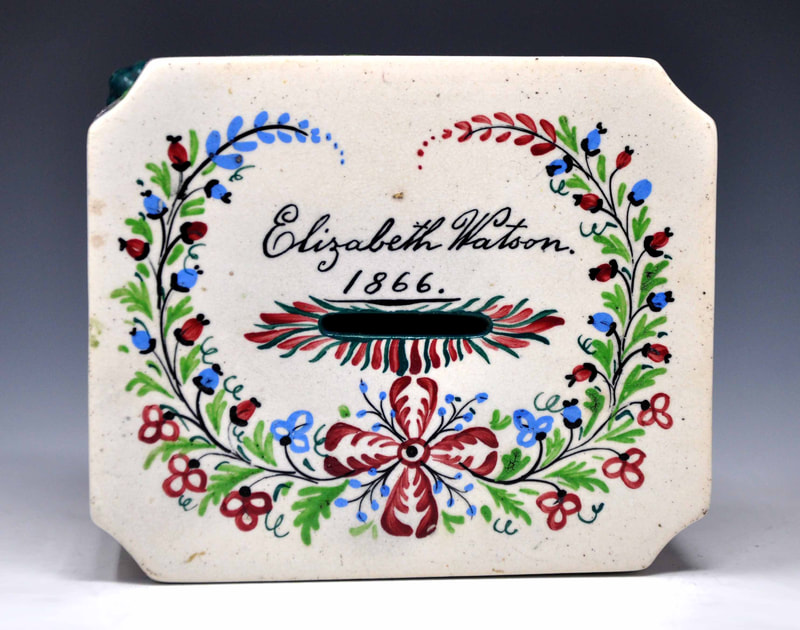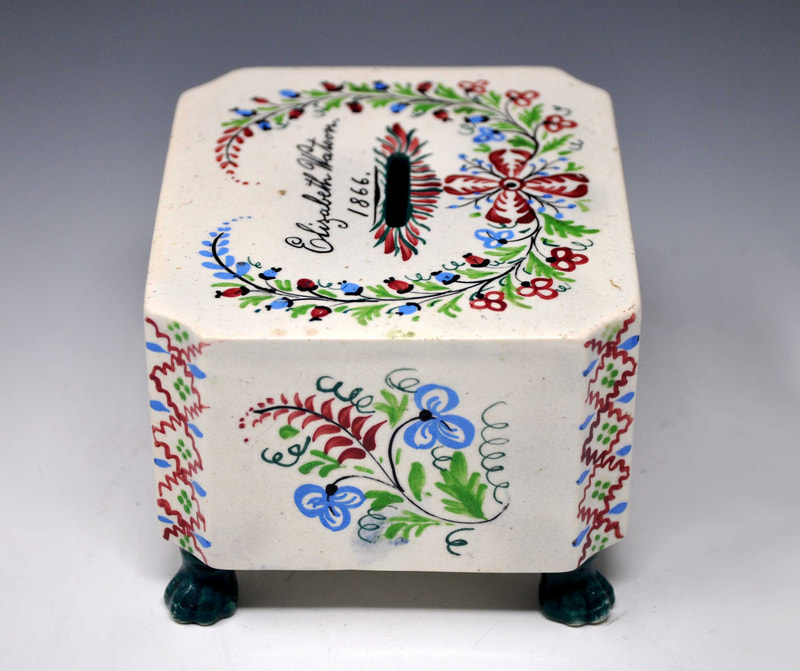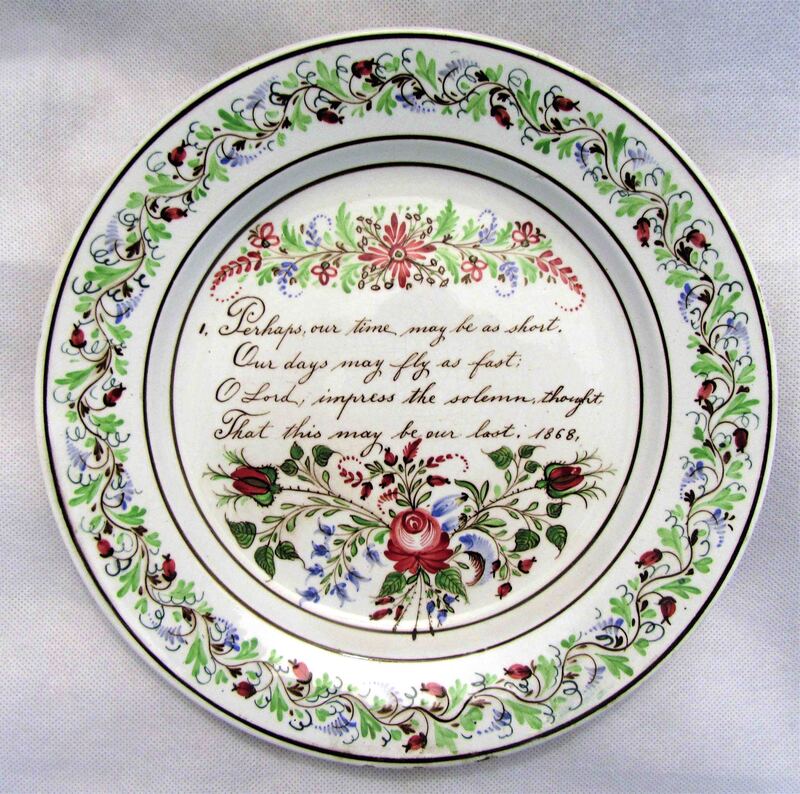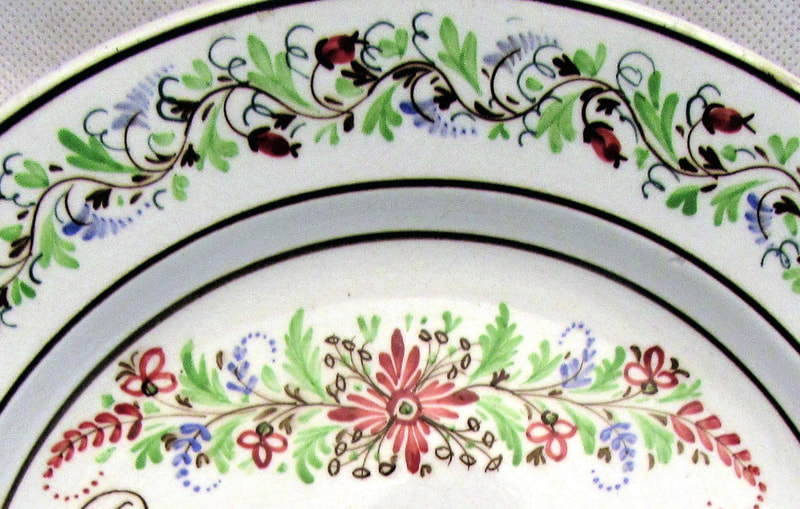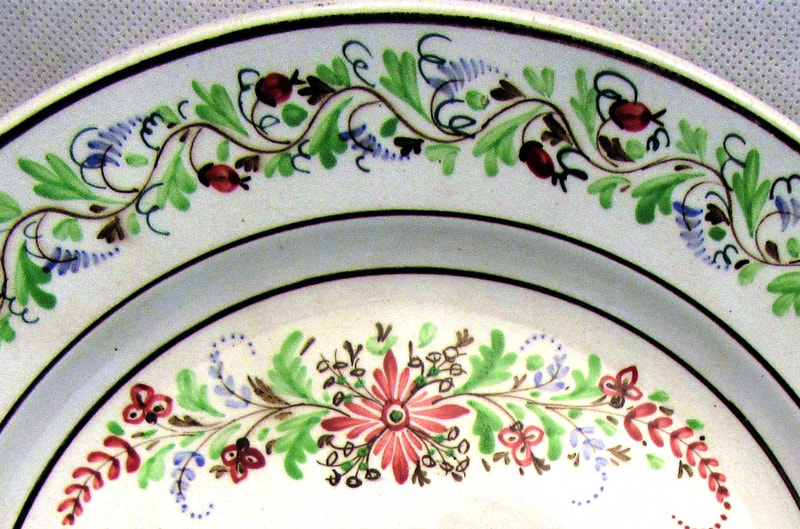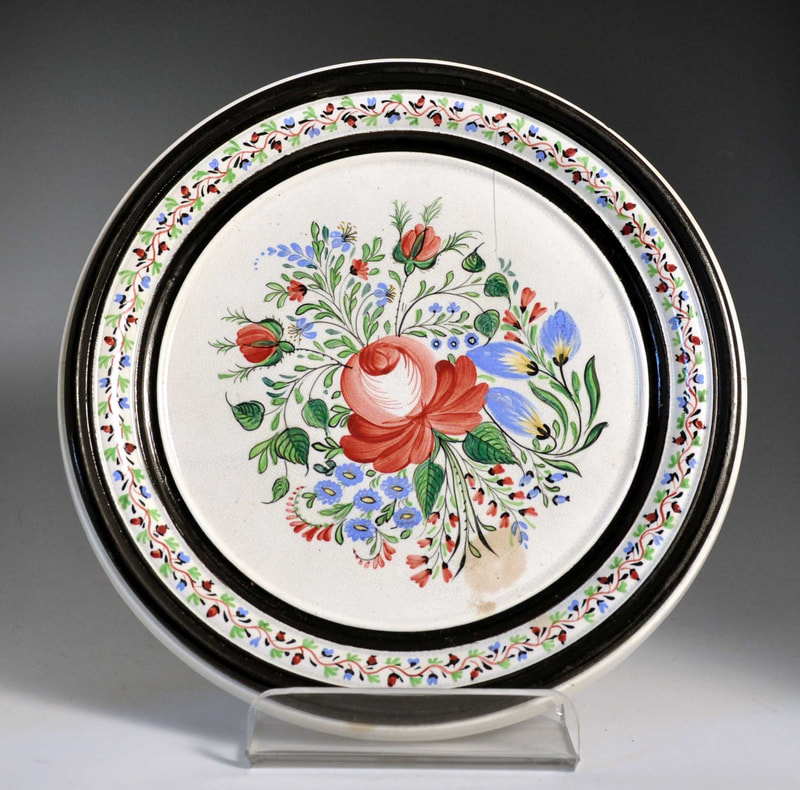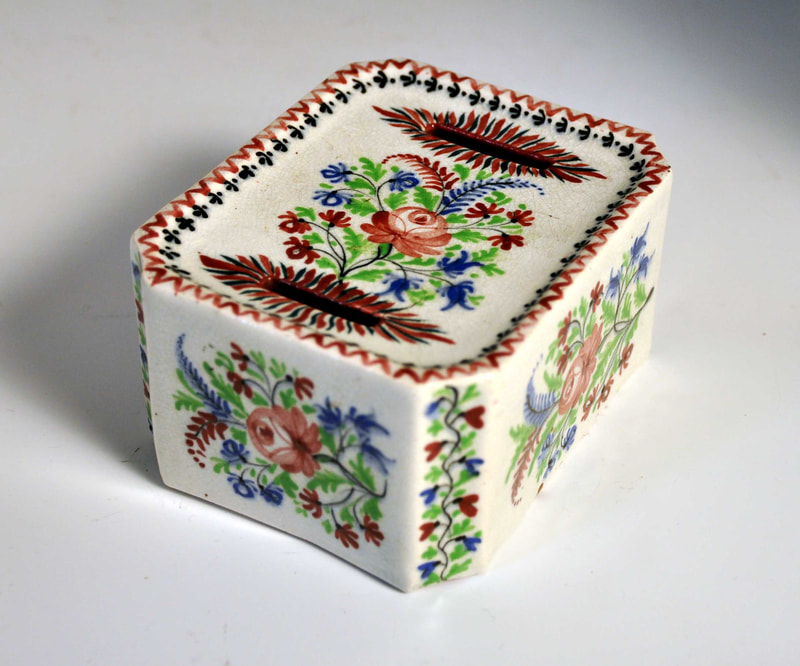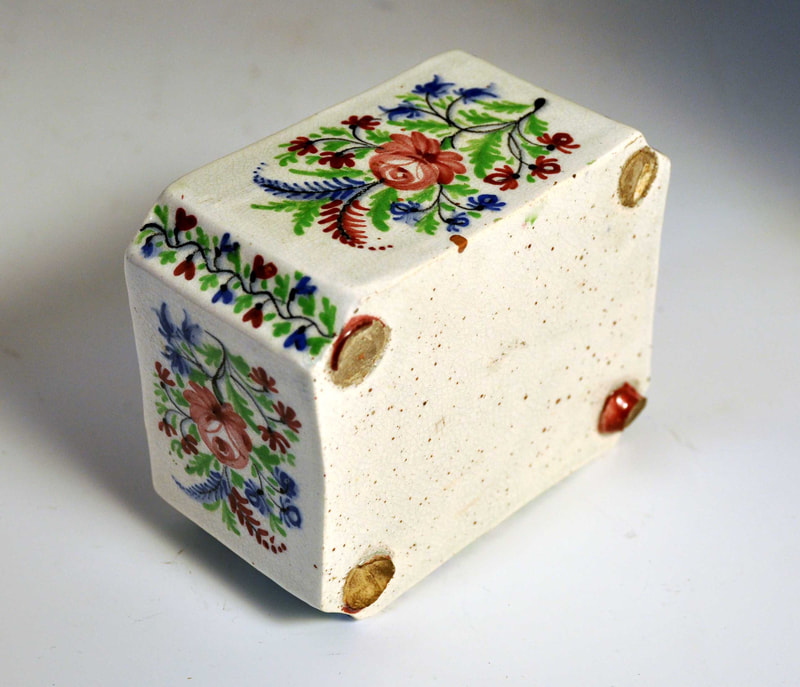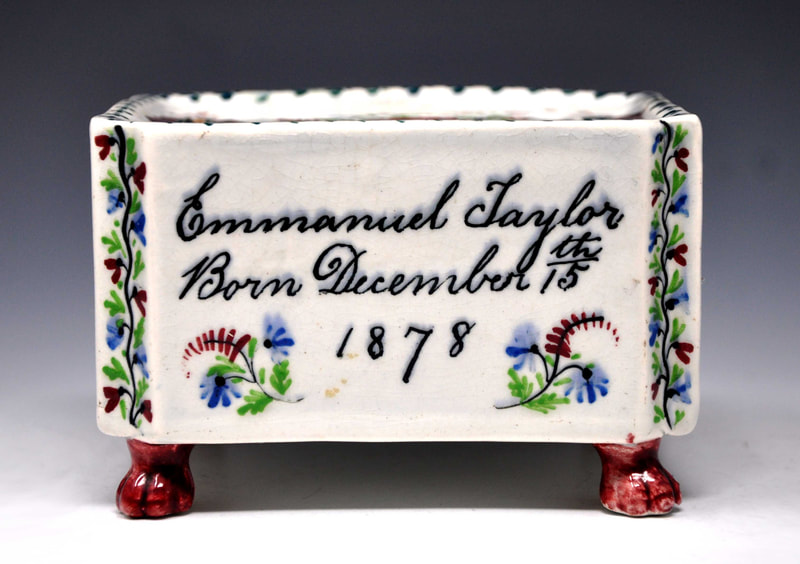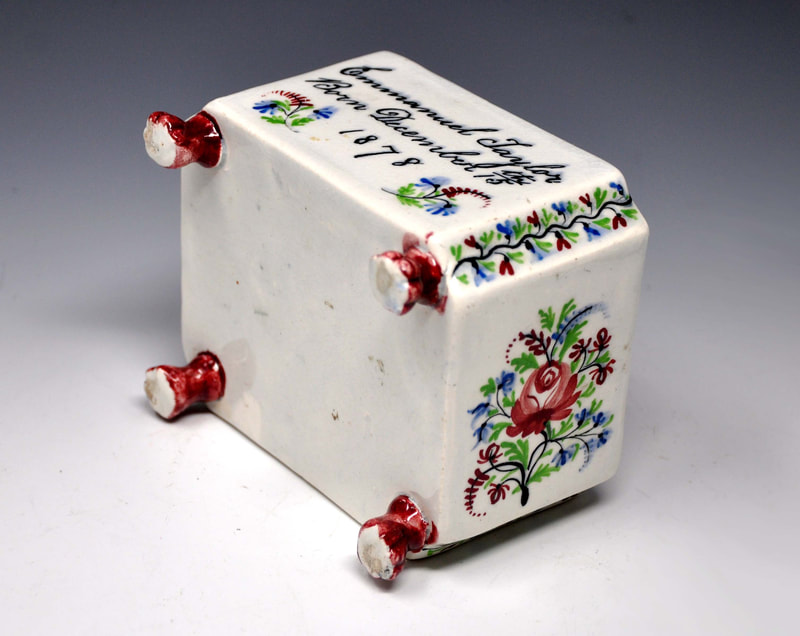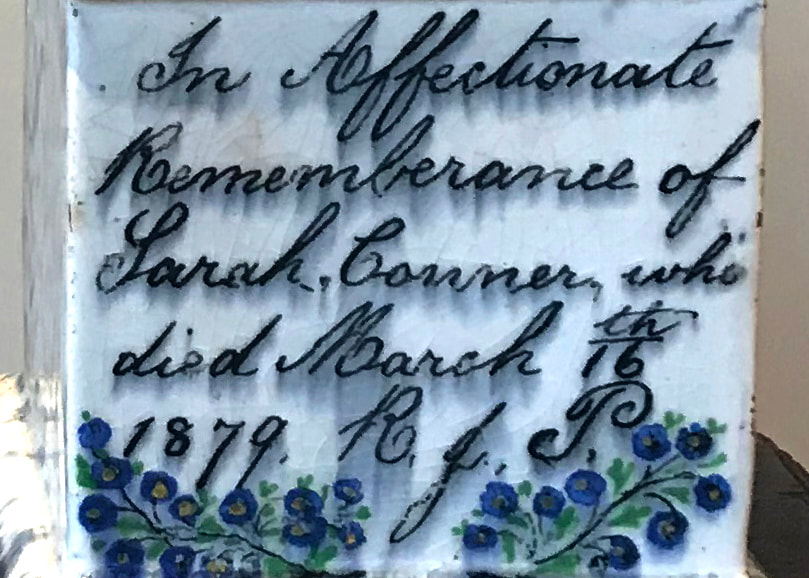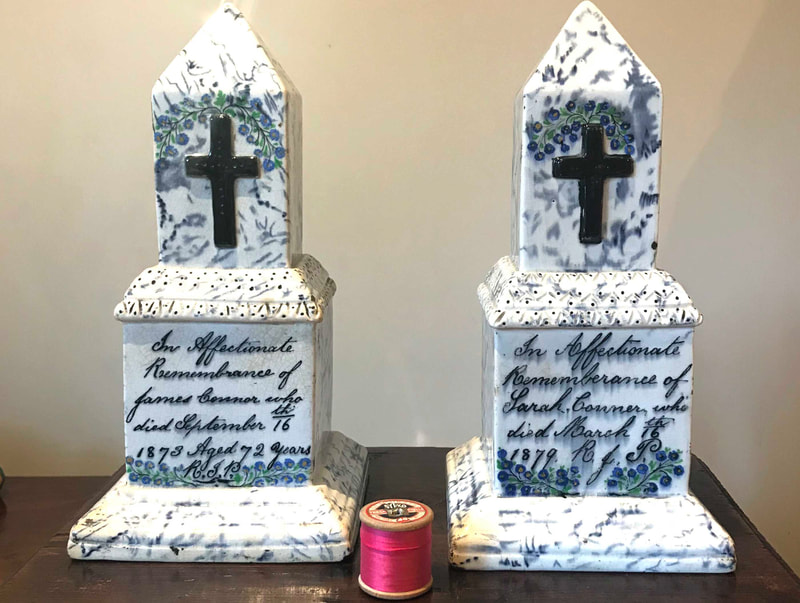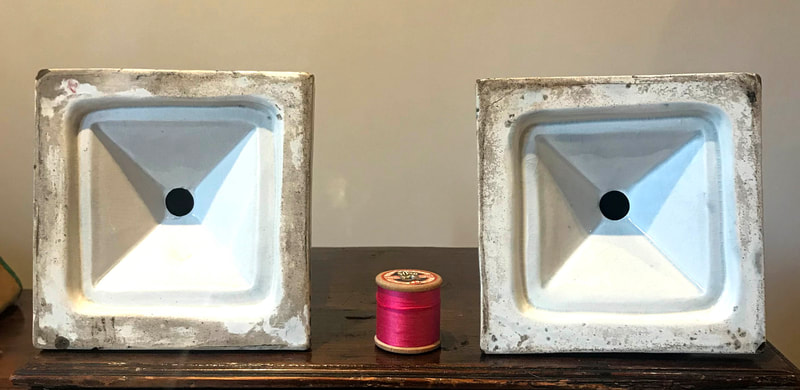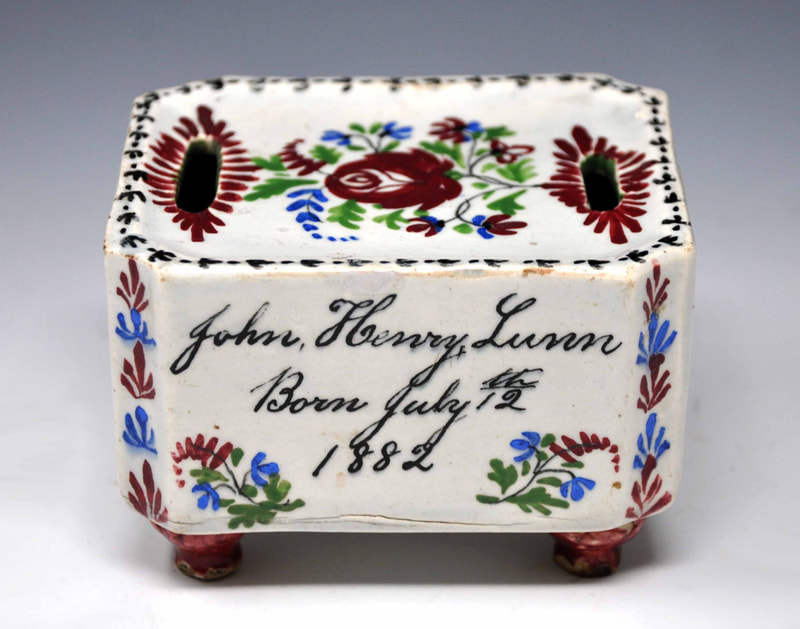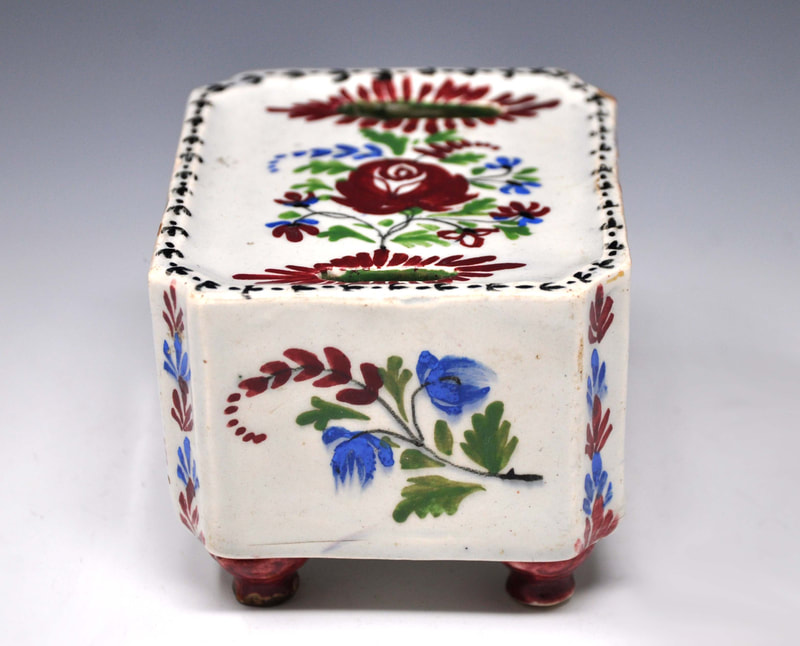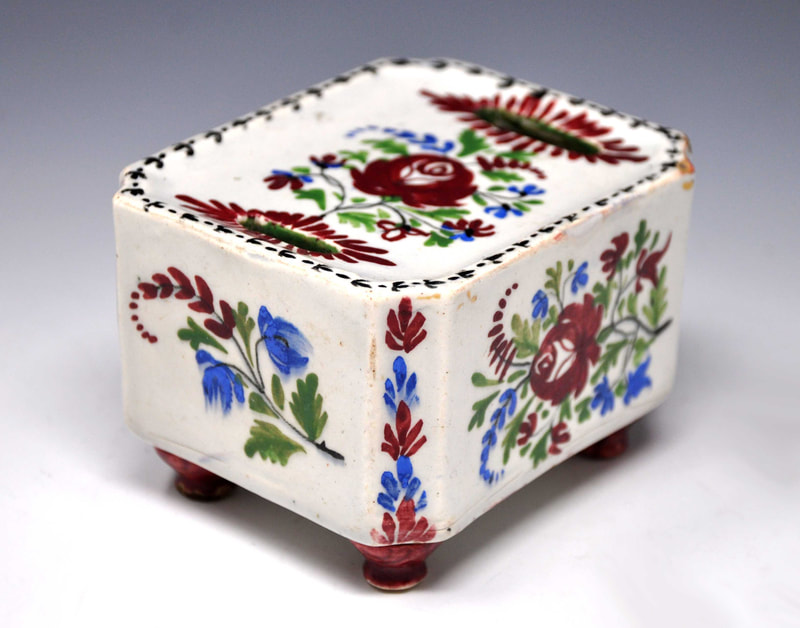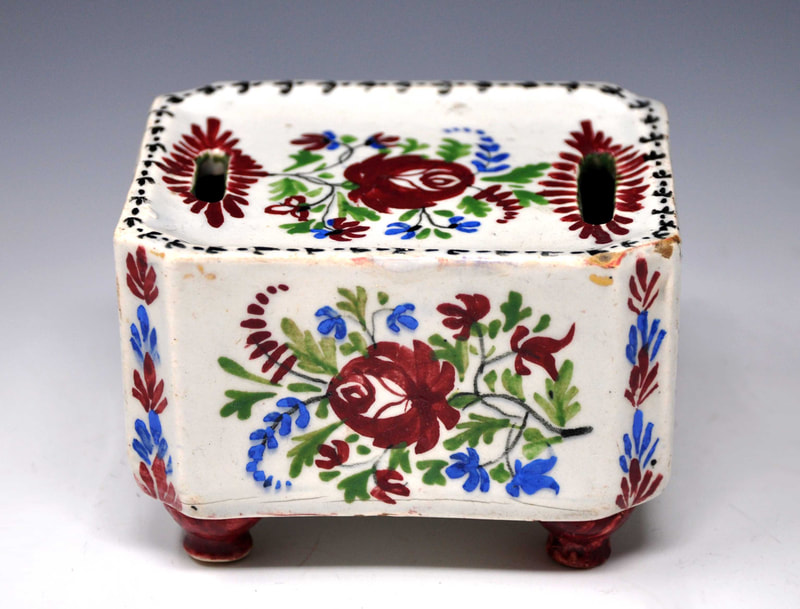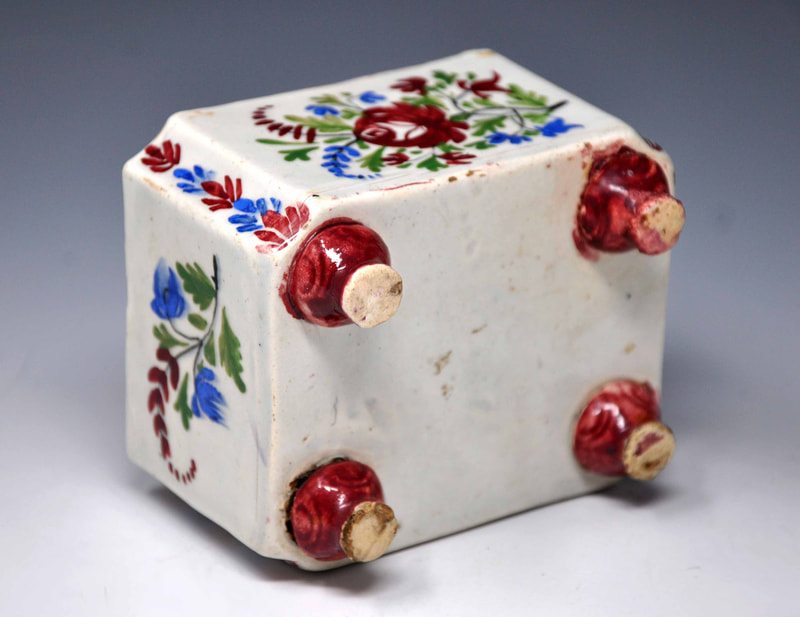Stockton-attributed money boxes and other hand-painted wares
I am hugely indebted to Joyce and Jack Cockerill for their kindness and generosity in sharing their knowledge of all things 'Stockton'.
William Smith & Co, The Stafford Pottery, South Stockton (Thornaby), c1825–1855
A money box with relief moulded cherubs harvesting, and an inscription to the underside dated 1845.
A very large money box with similar flower sprig decoration and paw feet, again dated 1845. Boxes with similar flower sprigs and inscriptions would continue to be made for almost another 40 years.
Unknown pottery, perhaps Stockton
This money box is a similar shape and form to the one above, although it has lost its feet. The flowers are quite different, so more work needs to be done on an attribution.
A very large money box with a similar monogrammed inscription to the box above. I am unsure of the significance of the pierced base.
William Smith & Co, The Stafford Pottery, South Stockton (Thornaby), c1825–1855
This money box has the printed mark 'Indian Sports' with the pattern number 38. The feet are moulded as bunches of grapes.
The very similar box below has round bun feet (click on the images to enlarge).
Below, an example with applied dogs and a relief with children embracing. Read more about these applied relief figures on Myrna Schkolne's fabulous website.
Finally, a version with a dated inscription for 1843. The lid is decorated with Putti acting out a Bacchanalian scene with a dog on each corner. It appears that these money boxes were assembled as bespoke items, and the date puts it firmly within the William Smith period.
William Smith & Co, The Stafford Pottery, South Stockton (Thornaby), c1825–1855
That money box has a printed mark to the base with 'Pattern No 86 "Rosette", the pattern name, above 'W.S. & Co'.
The box below has the full version of the fruit and leaves transfer on its top.
George Skinner & Co, The Stafford Pottery, South Stockton (Thornaby), 1855–?
An example with relief figures including a cricketer and an inscribed date '1860'.
George and William Smith & Co, The North Shore Pottery, Stockton-on-Tees, 1857–1867
Jack Cockerill writes of the money box below, '125 x 80 x 60 mm, with a black print of a ship on each end; one is inscribed Warrior Stockton, and the other Scawfell Liverpool. Both ships were built by M. Pearce & Co at Stockton; the Warrior being completed on 13 August, 1858 and the Scawfell on 11 December, 1861. James Smith, the owner of the pottery, owned a half share in the Warrior but he sold it to Liverpool owners in 1864. The Warrior was subsequently named Nautique and then Columbus; by 1890, the Scawfell was renamed Eliza and was Danish owned. The print on the front of the money box is inscribed, Affection, and that on the back, featuring a girl with a cat and a dog, The Beggar's Petition. (Other Teeside potteries made money-boxes of this shape.).' Northern Ceramic Society Journal, Volume 17, 2000.
Below a darning egg with the same 'Warrior Stockton' transfer and with 'Eliza' on the reverse.
|
|
The ship transfers are combined on this money box with a transfer titled, 'Blind Man's Buff', and a view of Christ Church, in Church Square, Hartlepool, built in 1854, and just up the road from Stockton.
Attributed to George and William Smith & Co, The North Shore Pottery, Stockton-on-Tees, 1857–1867
Although this money box has no 'Stockton' transfers, it has similarities to the boxes above. However, it is much larger. The untitled transfers are of domestic scenes with children, and Androcles removing a thorn from the lion's paw.
A box with feet apparently from the same mould.
Attributed to the Stafford Pottery, South Stockton (Thornaby)
This much larger than average moneybox has grape feet similar to the boxes above, but a shape more akin to the Stafford Pottery below.
The Stafford Pottery, South Stockton (Thornaby)
Ian Holmes has identified the verses from a hymn for dead children.
Below, three large (and heavy) plaques with similar flowers and borders. The left plaque is St Luke and the right plaque, St Mark. (See Nick Dolan, the Northern Ceramic Circle newsletter 86 and 87.)
Skinner and Walker & Co, Stafford Pottery, South Stockton (Thornaby), 1870–1877.
Ambrose Walker, Stafford Pottery, South Stockton (Thornaby), 1877–1890.
A pair of 'Remembrance' obelisks in the same hand as the money boxes and with hand-painted flowers.
